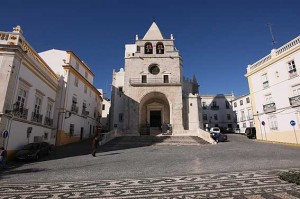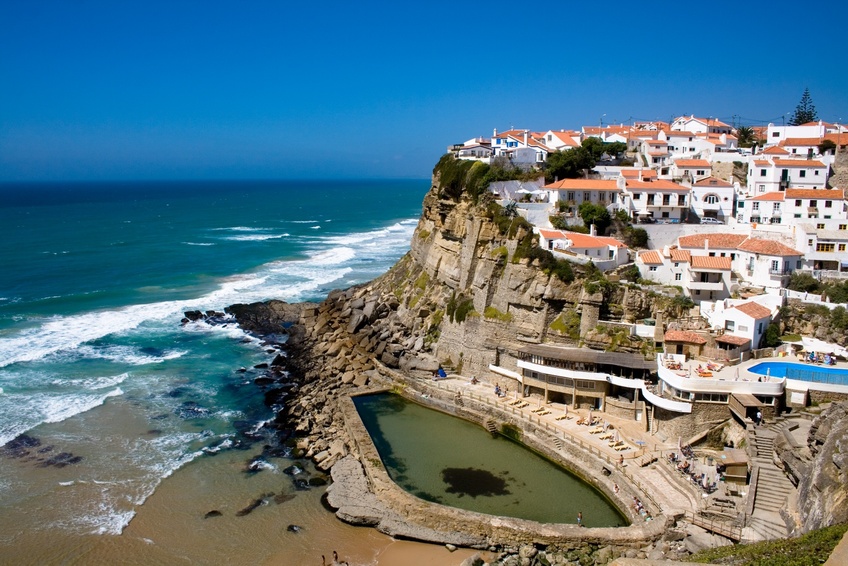 Elvas, small Portuguese city has just been declared a new UNESCO World Heritage Site.
Elvas, small Portuguese city has just been declared a new UNESCO World Heritage Site.
The site, fortified extensively from the seventeenth to the nineteenth century, represents the largest system of defensive walls to dry moat of the world. Within its walls, the city includes large barracks and other military buildings and churches and monasteries. So qu’Elvas retains vestiges dating back to the tenth century, its fortifications date back to the time of the restoration of independence from Portugal in 1640. The fortifications, designed by the Jesuit priest Cosmander, represent the best preserved example in the world of fortifications of the Dutch school. The site also includes Amoreira aqueduct, built to help withstand a long siege.
Keeping the main border between Lisbon, the capital of Portugal, and Madrid, the capital of Spain, the garrison town of Elvas, located in a river landscape, hilly, was fortified from the seventeenth to the nineteenth century to become the greatest defensive system of walls to dry moat of the world, with strong external built on the surrounding hills to meet the changing needs of the war of defense.
The city was supplied with water from the aqueduct of Amoreira, 7 km long, built in the late sixteenth and early seventeenth century and an essential element to the fortress to hold a long siege. Within its walls, the city contains a large number of barracks and other buildings at military functions as well as churches and monasteries, some of which have been adapted for military purposes. The property consists of seven elements: the historical center, the aqueduct of Amoreira, the fort of Santa Luzia and covered walkway connecting it to the historical center, the fort of Graça and forts of São Mamede, São Pedro and São Domingos .
The historic center with its castle, its walls remaining and religious buildings, show qu’Elvas developed within three successive fortified towns, between the tenth and fourteenth centuries, then it has been incorporated into great works of fortification that marked the period of the Portuguese Restoration War (1641-1668), when a variety of military buildings were built to serve its role as a garrison.
The city walls and the outer forts of Santa Luzia and of Graça and forts of São Mamede, São Pedro and São Domingos illustrate the evolution of the old Dutch fortification system to a unique defense system to dry ditches.
These remaining fortifications, begun in 1643, include twelve fortresses inserted in an irregular polygon drawing about a large segment of a circle centered around the castle and taking advantage of the hilly landscape. The walls and slopes are surrounded by a dry ditch and a counterscarp and protected by a half-moons. The fortifications were designed by the Dutch Jesuit Cosmander, on the basis of the Treaty of fortifications engineer Samuel Marolois, whose work, together with those of Simon Stevin and Adam Fritach, launched the Dutch school of fortification in the world . Cosmander applied the geometrical theory of Marolois to the uneven topography of Elvas and produced a defensive system considered a masterpiece of its time.
In the eighteenth century, the fort of Graça and four other forts in the west were built to cater to the development of longer range artillery.
As a remnant of a huge fortress of war, Elvas is an exceptional military landscape, with a visual and functional relationship between its fortifications, representing developments in military technology and architecture inspired by the theories and practices Dutch military, Italian, French and English. Elvas is an outstanding demonstration of the desire to possess land and autonomy of Portugal, representing the universal aspirations of European nation-states of the seventeenth and eighteenth centuries.
Criterion (iv): Elvas is an outstanding example of a garrison town and its defense system of ramparts and ditches dry that developed in response to the imbalance of power in Europe in the seventeenth century. Elvas can be considered as representing the universal aspirations of European nation-states in the sixteenth and seventeenth centuries to defend their autonomy and territory.
Integrity
All elements necessary for expression of outstanding universal value of the property are included within the well. A number of buildings are empty and closed to protect them from squatter and vandalism and are overgrown. In particular, the strong Graça is relatively isolated, unused and vulnerable to vandalism. The views of the fortifications and remote these are vulnerable to new developments and the visual integrity of the needs to be protected by a buffer widened slightly with adequate controls.
Authenticity
The large collection of original plans and drawings, military reports, photographs and descriptions reflects the authenticity of the property. Overall, the shape and materials of the fortifications are still virtually in the same condition as when they have become obsolete in the nineteenth century. Military and religious buildings have largely retained their function or their appropriate use has been assigned. Transmission of large masts have an impact on the authenticity of the environment and new developments weaken the.
Elements required for the protection and management
The property will be declared a national monument, subject to the National Law No. 107/2001 on Cultural Heritage in late 2012. The buffer zone will be declared Special Protection Area, subject to the controls of the municipal master plan by the end of 2012. The entire area including the property will be managed by the municipality with input from the Ministry of Culture via the IGESPAR.
It is necessary to extend slightly the buffer zone to protect the views from the fort of São Domingo and the fort of Graça.
The Integrated Management Plan of the Fortifications of Elvas (IMPFE) aims to bring together stakeholders to ensure the integrity of the property and improve its potential use. It aims to control the buffer zone and the area well by focusing on institutional cooperation, the involvement of private stakeholders, educational initiatives, scientific and cultural and information dissemination. The management plan will be implemented by the Office of the Fortifications of Elvas, in the town of Elvas, once the Bureau has been appointed by the mayor.
To support the plan, it is necessary to establish a comprehensive inventory of features and structures as a basis for management and monitoring. It is also necessary to prepare guidance on an appropriate design for new and rehabilitated buildings.
Elvas joins 12 other UNESCO World Heritage sites in Portugal making it a top destination for cultural tourism.



